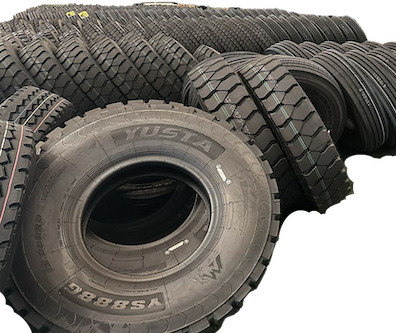How To Read A YUSTA Tire Sidewall
- yusta professional
- Jun 8, 2022
- 2 min read
Updated: Nov 27, 2024
What do the numbers mean on the sidewall of your tire? At first glance, you look at your tire sidewall and think, “’Do I need a super secret decoder ring to read this?” In addition to the model name of the tire there is a series of numbers that at first, you don’t deem important. However, these numbers are extremely helpful, especially when it’s time to replace your tires. Here’s a quick breakdown to help you decipher one of the best kept secrets in the automotive world: How do you read tire sizes?
TIRE SIZE
Example: YUSTA 215/40ZR17 87YXL EXTRA LOAD

215 represents the tire's section width, indicating the distance in millimeters from one sidewall to the other. This measurement can change based on the rim it is mounted on.
(There are 25.4 millimeters per 1 inch.)
40 denotes the two-digit aspect ratio, which reflects the proportion between the tire's section height and its section width. For example, an aspect ratio of 55 means that the section height of the tire is 55% of its section width.
R denotes the type of construction used in the tire's casing. R represents radial construction, B signifies belted bias, and D indicates diagonal bias construction.
17 The final dimension mentioned in the size refers to the diameter of the wheel rim, typically measured in inches.
LOAD INDEX AND SPEED RATING
The load index and speed rating, or service description, are the numbers that follow the tire size.
The load index indicates the weight a tire can bear when correctly inflated. For passenger tires, load indices range from 75 to 105, with each number representing a specific carrying capacity. This capacity for each index value is detailed in a load index chart. U.S. passenger car tires display the load limit in pounds, while European tires provide the load limit in kilograms and occasionally in pounds.
Y Speed ratings are indicated by letters from A to Z, each corresponding to the maximum speed a tire can handle under its specified load capacity. For example, S corresponds to a top speed of 112 mph. Although a tire can operate at this speed, Continental Tire advises against surpassing legal speed limits.
Rating
Maximum Speed
Q 100 MPH
S 112 MPH
T 118 MPH
U 124 MPH
H 130 MPH
V 149 MPH
W 168 MPH
Y 186 MPH
Z Over 149 MPH
DOT Serial Number
The "DOT" symbol certifies the tire manufacturer's compliance with the U.S. Department of Transportation (DOT) tire safety standards. Tires made in the United States have the DOT serial number located on the inside sidewall near the rim.
Below is a description of the serial number. Starting with the year 2000, four numbers are used for the Date of Manufacture, the first two numbers identify the week and the last two numbers identify the year of manufacture. This identifies how old a tire is.
Before the year 2000, the date of manufacture was indicated by three numbers: the first two numbers represented the week, and the last number denoted the year. Tires made in the 1990s are marked with a decade symbol (a sideways triangle) at the end of the DOT serial number.


Comments